Sare jahan se acha…
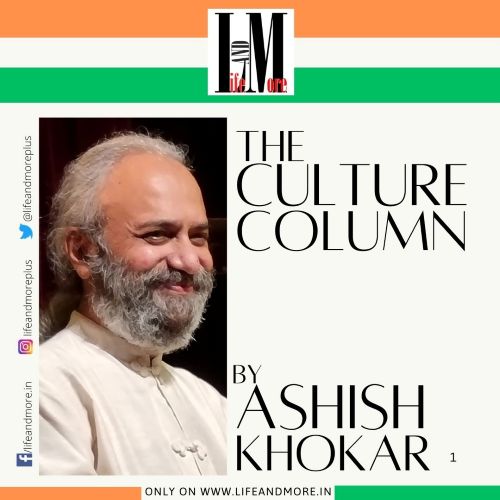
…Hindustan hamara! Iqbal ‘s immortal words (penned in 1904!) still resonate with many; KBC did a special focus with three Armed Forces talents, one each from the Army, Navy and Air Force. They were all articulate and said all the right things because they knew for once their words will be heard by millions.
Millions toil and billions sweat for India that is Bharat today. Artists do their own bit; putting up patriotic events on the occasion of the Independence Day. Why, even we released our list of annual attendance awardees on this day, with the Indian flag as the leitmotif.
Awards, if given at the right time are valuable, if given as tokenism then it remains a token. We try to help young artistes, those with fire in belly and those needing an extra push. That they do well in life, 90/100 times, shows we chose well. We choose seniors bypassed by the system or mid-level who are likely not to be noticed by the system. And then there are those who made the scene from behind the scene: the printer, the designer and the lights man. Awards are more a recognition of work in field, sometimes off field too. Writing for one. Documentation. Archiving. Filming. Photography. Soon, digital art. That a society recognises such talents now, shows a certain coming of age.
Saare Jahan Se achha is also the name of a dance festival in Delhi at India Habitat Centre, mounted every year for the last 20 years by senior Odissi artiste-guru Ranjana Gauhar of Utsav society. A trained theatre talent from SRC Rajendra Nath days in 1970s, she took to Odissi under Guru Aloka Panikar and her guru Mayadhar Raut at the then Bharatiya Kala Kendra. Shriram was added later. They are better known as owners of Kamani auditorium, Delhi’s popular hall in Mandi House.
She also learnt Mayurbhanj Chhau from Guru Janmejay Sai Babu and undertook productions. Strength by strength she has grown in the field for over 40 years and this festival is testimony to her Punjabi by Nature of never say die. Atal Bihari Vajpayee died some years ago and suddenly all art festivals were called off in homage. I remember standing with her in HABITAT hall, waiting for people to come but slowly all of Delhi trickled in, for such is the reputation of this festival. It’s a platform for her own students but also productions and propounders of other forms.
This year there was an animation-driven production Nal-Damayanti, done by her team which held well and the story moved seamlessly. Santosh Nair’s students added their bit of bodily movements. Music by Bankim Sethi (done decades ago) was uniquely fresh and of high class with the old world resonance and so were technical inputs of Sandeep and team. Kevin in the main role tried his best and Brinda Chaddha was a winner as princess. This story is not often told but told by the Utsav team well.
Day two had three other established dancers of which Vidha Lal shone like a well-cut diamond. She, with her group, put her best foot forward and both the aesthetics and the art was of polished calibre. The Odissi by Utsav students were pleasant. They did what was taught with feeling and involvement. Deepika Reddy, with daughter Shloka set the tone of the evening with a first-rate Kuchipudi presentation. What’s the first rate? Foundation, speed in a Kuchipudi without sacrificing content and pleasing stage personality that connects with the audience. Alas, Sunanda Nair’s Mohiniattam next was heavy, laboured and passable. While her face is expressive, her body moves with strain. The Mysore brand of Bharatanatyam by one Shrimathi Madholkar was simply not fit for this festival. It was so casual that it looked like she was dancing in her living room! This dancer is hardly known or seen in namma Bengaluru, so to see her so far from home in an alien setting of an established festival of Delhi, was both a surprise and a disappointment. A good opportunity to showcase Guru Lalitha Srinivasan wasted. Otherwise, Lalitha Guru is someone who did lots for Bangalore by mounting one of its best festivals since the 1980s onwards. Today Namma Bengaluru is a very happening place!
It was rewarding to see@ BIC (that’s Bangalore’s most happening THINK TANK/Culture and Society Hub; full form being the Bangalore International Centre, created by a group of do-gooders of Karnataka like KN Shanth Kumar (co-owner of Deccan Herald Group/Mysore Printers) and many retired but not tired IAS officers like Das and Chiranjiv Singh sahib; AP Venkateswaran – the ebullient former and now late Foreign Secretary and his dancer wife Usha; philanthropists Nandan and Rohini Nilekani urbanist like V Ravichandar and scores of members from different walks of life on Board now like Hema Hattangady, Vibha Dhawan, M N Krishnamurthy, Ashadevi, Githa Shankar, Sangita Jindal, Jhanavi Phalkey. It runs like a Rolls Royce (silent) by Vikram Bhat (no, not that white-haired film-maker of Bombay but a smart ex-Wall Street mover-shaker now back in namma Bengaluru) with a more silent team of Sandhya Kannan, Saraswati, Raj, and company. It is equivalent to (if not better now! in terms of programming) the IIC of Delhi or NCPA of Mumbai. Madras has nothing of the sort, still wrapped up in sabha culture full of relics! Kolkata, forget it, though active and alert and Hyderabad is hybrid culture!
BIC presented a group of four lasses from aamchi Mumbai in a riveting evening. Titled Deva Nartana– A Celebration of the Dancing Gods, it was a medley of four forms – passable Mohiniattam by Saji Menon (that costume covers up all the podginess!) enchanting Odissi by Namrata Mehta, the only one with complete aesthetics, that included alta on feet and a Bharatanatyam by Prachi Saathi that had everything going for it and a Kathak that was simply superb by Bhakti. Deshpande.
Ardhanarishwara was the first offering and performed by Prachi Saathi and Namrata Mehta in Bharatanatyam and Odissi respectively. When two dancers do their styles, to merge and meet is not easy but they made it effortless. Prachi has a rather hard face (though pearly teeth) and her dance is strained. Namrata is an ace disciple of one of Odissi’s best senior dancer- choreographer Daksha Mashruwala (who is among the best dressed ladies of India!). Namrata Mehta is a natural, guarded but flowing; perfectly etched but not posed. Her Odissi is soothing. Both suffered from a terrible female singing voice, shrill singing and besura in places. Even the male voice faltered in the end notes of Om Namah Shivaya.
Tattvamnext, performed by Saji Menon in the Mohiniattam style, researched and choreographed by Kanak Rele , who drew from “ancient Kerala ritual traditions and celebrated the supreme Goddess in her primal, tantric form. Through rhythmic patterns and geometric formations evoking the Shri Chakra, the dance embodies the universal truth that the divine feminine is the very essence of creation itself. In the context of Deva Nartana, Tattvam stands as a reminder that dance itself can be a ritual of transcendence — transforming space into temple and movement into prayer”– said the programme notes but on hand, feet and overall appearance all that the dancer Saji Menon conveyed was a weeping willow. Why do most Mohiniattam dancers look weepy on stage? Especially the Mumbai lot. There is no joy on face. Modern Mohinis are all rather sad looking? Life in a mega metro? Polarity at its best. Laboured movements were covered up well by excellent music.
Rudrani, performed by Bhakti Deshpande in Kathak was full of spunk and substance. Here is one bright star of the form in the making. Wow! In her depiction, the Goddess Durga emerged in her fierce yet compassionate form, rising to vanquish Mahishasura (repeatedly pronounced wrongly by both the comperes, adding an M in between at random). Bhakti should be renamed Shakti! Here is Kathak dancer, with regional stylistic features, to watch. She is all fire and power on stage.
The Dashavatara that concluded the evening, had a new choreographic touch to it, with split entries and cameos that were well etched. This is one item that can travel well and organisations like the ICCR can use it literally as an export item. Jayadeva’s timeless Geet (most dancers also write wrongly spelling it Geeta, not Geet. It is SONG of Krishna and not Gita as in the epic tome) Govinda.
That they all danced to one common music score by Satish Krishnamurthy was to their credit. The lighting was superb by STEM-trained K Ramgopal. The standing ovation Bangaloreans gave showed they are both generous and celebrate young talents; other metros are often not so.
What a debut it was! Or was it? A dozen diggaj musicians on stage; half of Bangalore that matters in the hall; a full family of art lovers and a little girl of 23 who is a full-fledged dancer before even her debut. And when she spoke, gawd! It was a koel voice. Is she for real? All that sweetness inside out. That’s Pavanee Uma Murli for you. It was s mancha pravesham more of mother on Veena than of daughter Pavanee. The mother is doe-eyed, diminutive woman but what a fine homemaker and mother. She looks like a teenager in a sari herself! How can one family have so much talent?
From smashing poster invites to fulsome costumes by Rohan Suratwala (no, not a Parsi but you get the drift, from Surat and all on stage and staff on duty wore the same shade of black currant ice cream!), a student of Kakuliben who is a disciple of Pt Harish Sundarlal Gangani of Baroda MSU (and our esteemed awardee this year) to alluring lights by Suryakumar, the show was first rate. The start was too serious, all that sitting and bhakti thrust in a youngster. Abhi jeene do bachi ko. But each item was a progression, the last being old fashioned Hari katha-K!
All were in total sync. The singers, the musicians and the compere, Bangalore’s best Smitha Srinivasan. And rarely the food matches the fare on stage but ISKCON served food with grace and bhakti. The Murli Mohan family pulled out all the steps to present the best foot forward of their daughter Pavanee. That the patron-saint of Bangalore Chiranjiv Singh brought “elaichi mala” to honour this prodigious child mega talent, showed here’s a Kathak dancer of Bangalore to watch.
GoBrahma sounds like an ISRO rocket or missile aircraft but it is an arts intensive start-up by a spunky corporate lawyer Roopa Doraswamy. In her new avtara, she decided she wanted to do what she loved most: Dance. She had learnt a smattering of chaste Bharatanatyam from Alarmel Valli in Chennai in her youth and then continued with a local teacher in Bengaluru but she turned a producer of dance shows because she wanted to take Bharatanatyam to Broadway and corporatise Indian classical dance. Now that’s a tough call in India where dancers neither have the discipline to do team work nor have the professionalism to survive beyond the local. Often their egos are larger than their meagre talents. Roopa has the brain (of a corporate lawyer) with the heart (of an artist). She is a go-getter, possessed by a missionary zeal. Paschimavahini Krishna is a tale of her family-owned temple near Srirangapatna, Mandya district.
Srirangapatna is actually an island in Kaveri river with culturally rich heritage, a bird sanctuary to boast of and the most beautiful landscape just a hundred kilometres from Garden city turned garbage city, Bangalore. The smile of its people reflects on Roopa too.
She has revived the tale with splendour and this is one show that the Karnataka Tourism Ministry can stage daily at Srirangapatinam as a superb sound and light show. In fact, Roopa Doraswamy has done the Tourism Department of Karnataka’s work! They should adopt. Tech driven is both its strength and weakness for it cannot travel to moffusil festivals like Khajuraho or Konark but the choreographer can surely cut the cloth according to the cloth as per the stage. Dancers drawn from different moulds – Bharatanatyam and Kuchipudi – came together well . At Chowdiah Hall it was a spectacle all enjoyed. With fireworks and all.
Fireworks it can be when many differing talents meet. Delhi is a city of Djinns, where devils also wear Prada or purdah. It is very interesting for me to see in a hall, all go to the front row thinking they are VIPs. As professional observers, I and my ilk (Leela Venkataraman) always sit in the back rows from where we can see all the fake hugging and air kissing going on. The same folks then go home and bad mouth each other privately or on cell. Drama queens and kings! But the beauty is most can break bread together, run each other down, still get up the next day and go looking for more fun, or victims, or both. Young ones who see this behaviour must wonder what and whom to believe in? Young ones also then think it is so easy to arrive on the scene.
All want to arrive nationally. What’s national? Is it an award given by the state/ or real work and worth; outreach and number of shows? Is it quantity or quality of work? Young India has lots of competition now but they need matching material. Foundation. A good guru, not a mere teacher running a factory. Why do you think one painting sells over the other? In an exhibition why only two or three become the top works that many wish to possess and other 10 no one even looks? Talking of paintings, Vani Chandrashekhar, niece of JS (not Junior Statesman but J Swaminathan, the iconoclast) held her exhibition at the IIC, Delhi, inaugurated by art patron Aman Nath himself a renaissance man. He rarely agrees to inaugurate such shows but this one was different. Look at the colours!
Who decides a book is good? Marketing? Fake lit fests which are full of chefs and cheese! Not authors and books. As I write this, news just came in that Denmark is cutting 25% VAT (tax) on books, so that more people READ! I hope you read too, if not this column than others. A nation’s wealth is not mere steel plants and Defence outlays. It is in an educated populace. Let my country awake into that light…..the bard said. He won a Nobel too. I’m talking of the Tagore, not Sharmila!
Saraswati has blessed Ashish Khokar totally for he has written 51 books, 5k articles in print media in the last 45 years (for the Times of India, The Hindu, First City, Life Positive, the India Magazine and India Today). He created 85 modules for the UGC e-pathshala MA Course. A pioneer in arts administration, he served the Delhi State Akademi, INTACH in the 1980s and worked internationally in France, Sweden, Germany and China in the 1990s. He is a visiting expert/professor to many universities abroad (Italy, Germany, USA, Malaysia and Mauritius). He is teaching special modules at MSU-Baroda, Punjab University Chandigarh, Bangalore and Mangalore universities. He has been bringing out India’s only yearbook on dance for the last 25 years – called attendance which is endorsed by UNESCO-CID as a model dance journal. He gives attendance awards to youngsters and seniors. Till date 40+ attenDance awards have been given. A list of 51 books and 40+ awardees can be seen on www.attendance-india.com. He is also the longest serving columnist for narthaki.com and India Today – contributing articles for 25 years now. Currently, he is the Chairman of NEEMRANA Dance Initiative and Curator of the Mohan Khokar Dance Collection & Archives@ IGNCA, Delhi. The India HABITAT centre and the IIC avail his expertise for special events and the world over, and he is treated as an authority on Indian dance. More details on www.attendance-india.com


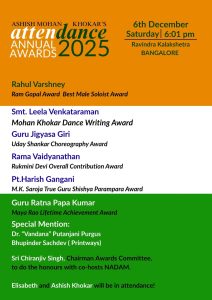
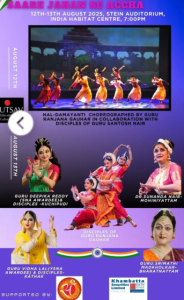
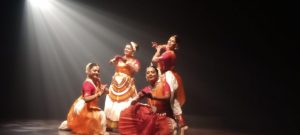
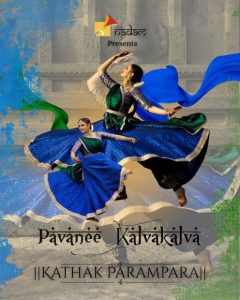
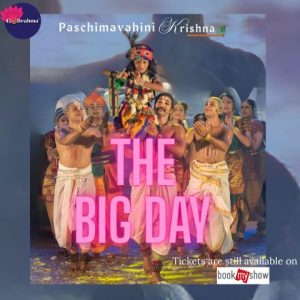
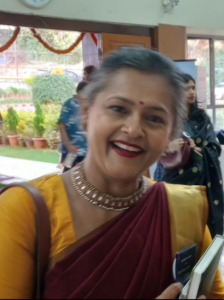
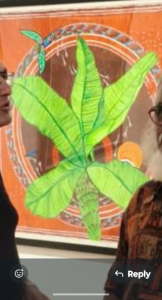

2 Comments
Thank you Ashish ji for this thoughtful piece. As a Kathak dancer myself, I truly resonate with your emphasis on valuing both the visible and invisible contributors to our art world. Grateful for your constant efforts in archiving and celebrating Indian culture.
Namaste. Wow! What a lucidly informative dissemination of various art forms performed during the past weeks. Khokarji’s in-depth elucidation ensures every aspiring and wannabe rasika succeeds in comprehending the dance narratives. Thanks to Khokarji, I for one have been benefitting hugely by an extremely knowledgeable columns. So much to infer from such rich classical heritage we are blessed with. It’s captivating to read layered narrative opening up an hitherto unknown world of art and artists. Yes, platforms and push for talented exponents are imperative. Hopefully, a structured and well rounded entity emerges sooner than later under the aegis of true connoisseurs to give fillip to talented artists with burning passion. Indeed, Saara Jahan Se Acchha…Hindustan Hamara, despite innumerable diversities.